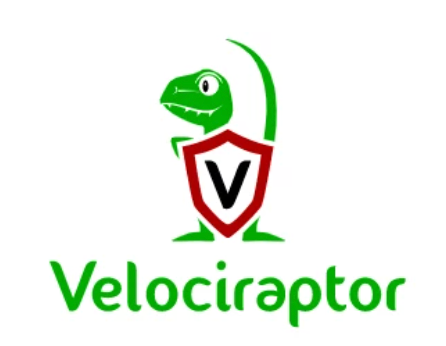Last updated at Wed, 17 Jan 2024 18:05:35 GMT
Written by Dr. Michael Cohen
Sigma Support, ETW Multiplexing, Local Encrypted Storage and New VQL Capabilities Highlight the Last Release of 2023
Rapid7 is excited to announce that version 0.7.1 of Velociraptor is live and available for download. There are several new features and capabilities that add to the power and efficiency of this open-source digital forensic and incident response (DFIR) platform.
In this post, Rapid7 Digital Paleontologist, Dr. Mike Cohen discusses some of the exciting new features.
GUI improvements
The GUI was updated in this release to improve user workflow and accessibility.
Notebook improvements
Velociraptor uses notebooks extensively to facilitate collaboration, and post processing. There are currently three types of notebooks:
- Global Notebooks - these are available from the GUI sidebar and can be shared with other users for a collaborative workflow.
- Collection notebooks - these are attached to specific collections and allow post processing the collection results.
- Hunt notebooks - are attached to a hunt and allow post processing of the collection data from a hunt.
This release further develops the Global notebooks workflow as a central place for collecting and sharing analysis results.
Templated notebooks
Many users use notebooks heavily to organize their investigation and guide users on what to collect. While Collection notebooks and Hunt notebooks can already include templates there was no way to customize the default Global notebook.
In this release, we define a new type of Artifact of type NOTEBOOK which allows a user to define a template for global notebooks.
In this example I will create such a template to help users gather server information about clients. I click on the artifact editor in the sidebar, then select Notebook Templates from the search screen. I then edit the built in Notebooks. Default artifact.
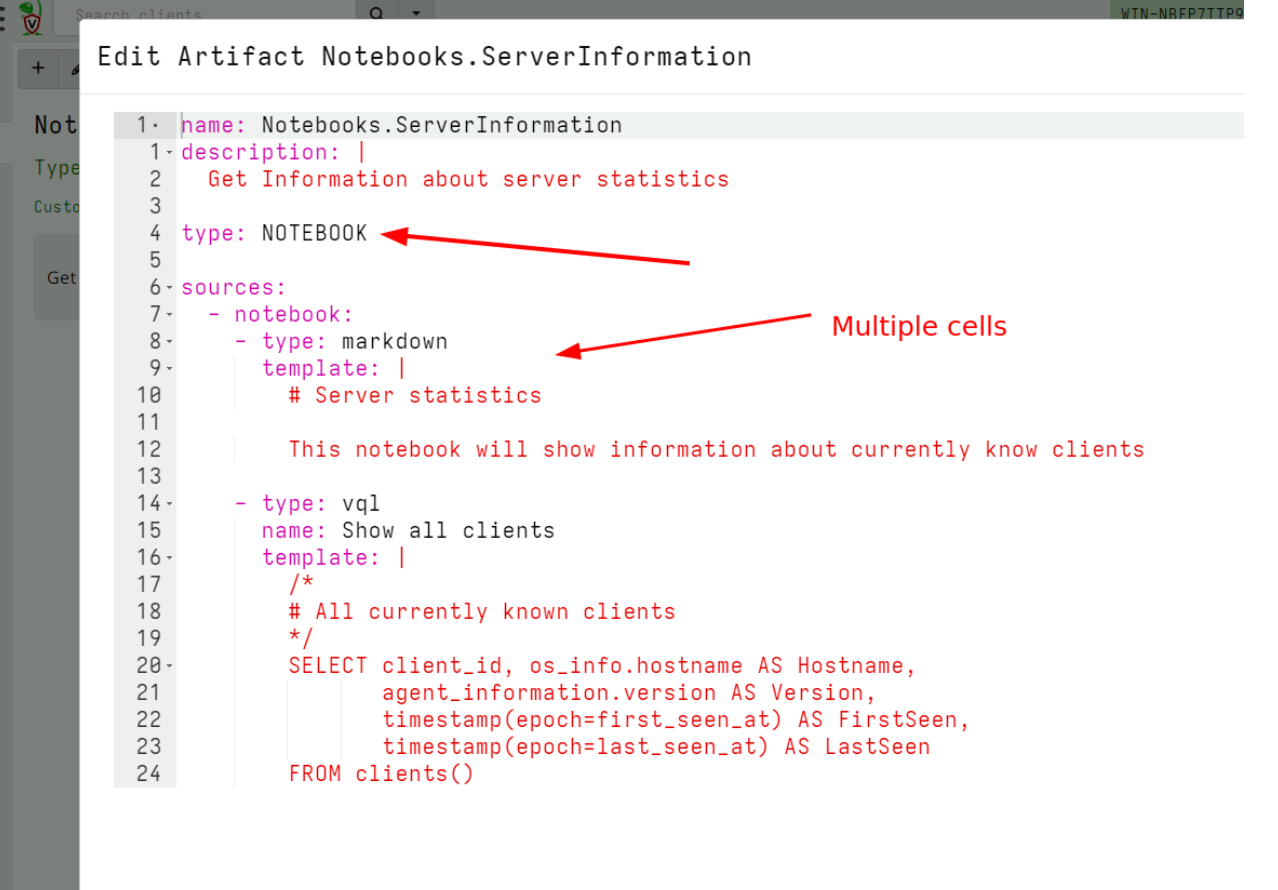
I can define multiple cells in the notebook. Cells can be of type vql, markdown or vql_suggestion. I usually use the markdown cells to write instructions for users of how to use my notebook, while vql cells can run queries like schedule collections or preset hunts.
Next I select the Global notebooks in the sidebar and click the New Notebook button. This brings up a wizard that allows me to create a new global notebook. After filling in the name of the notebook and electing which user to share it with, I can choose the template for this notebook.
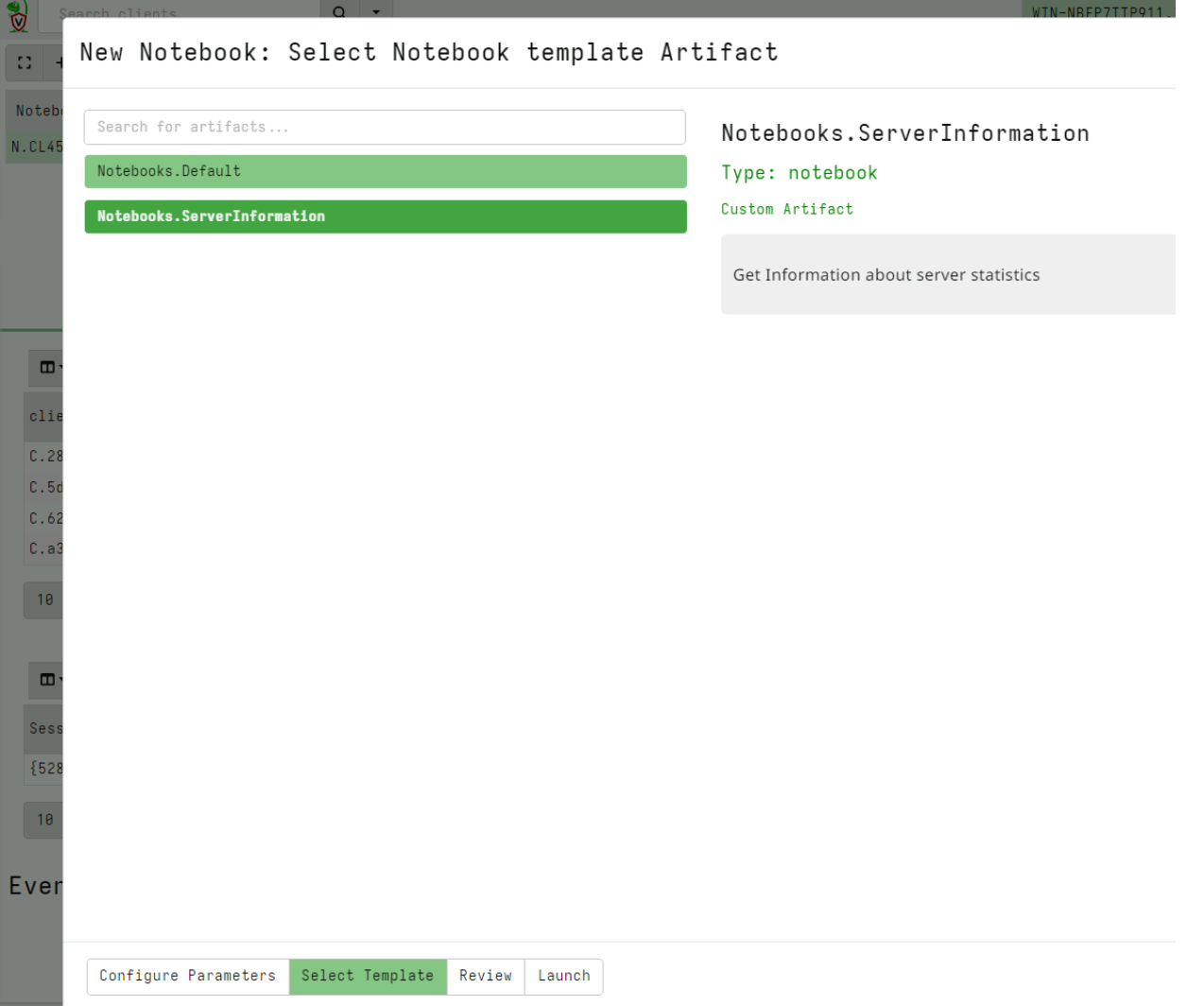
I can see my newly added notebook template and select it.
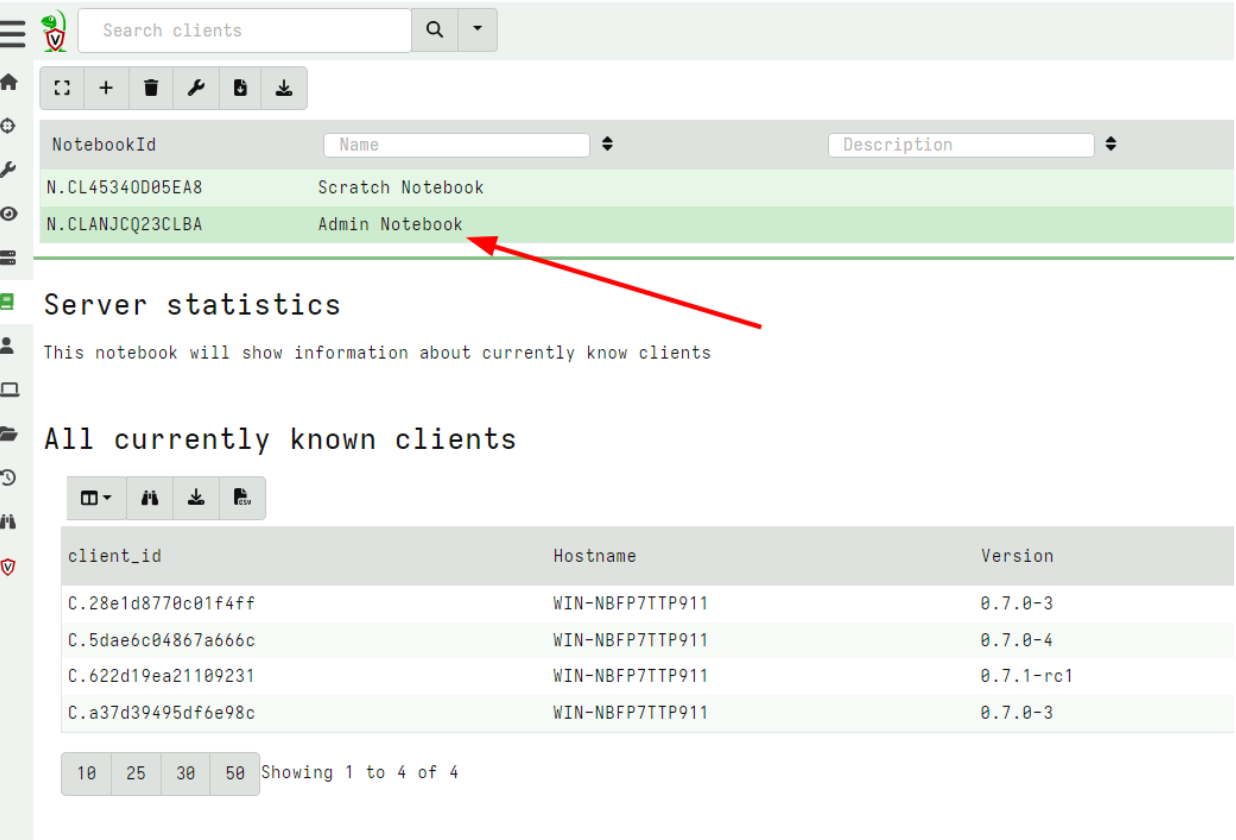
Copying notebook cells
In this release, Velociraptor allows copying of a cell from any notebook to the Global notebooks. This facilitates a workflow where users may filter, post-process and identify interesting artifacts in various hunt notebooks or specific collection notebooks, but then copy the post processed cell into a central Global notebook for collaboration.
For the next example, I collect the server artifact Server.Information.Clients and post process the results in the notebook to count the different clients by OS.
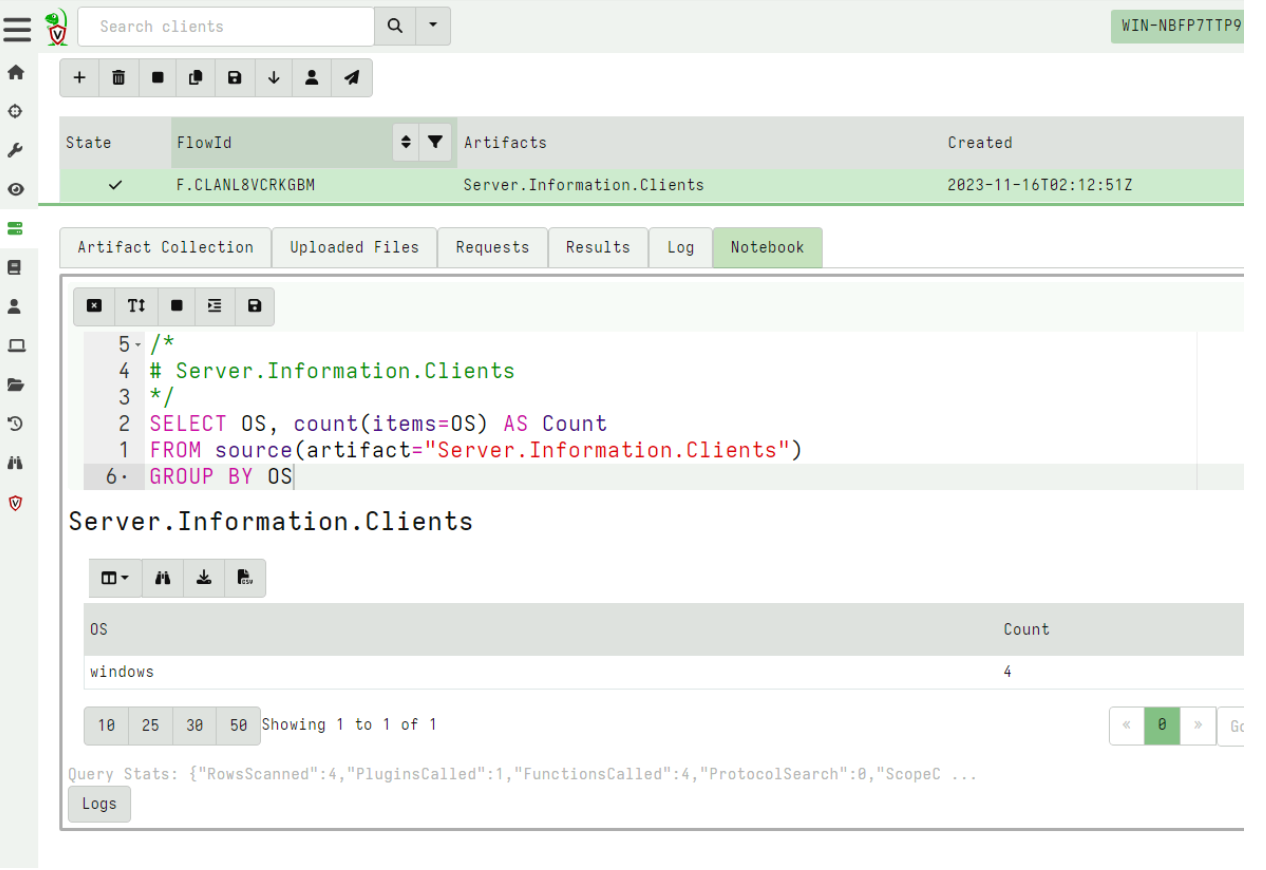
Now that I am happy with this query, I want to copy the cell to my Admin Notebook which I created earlier.
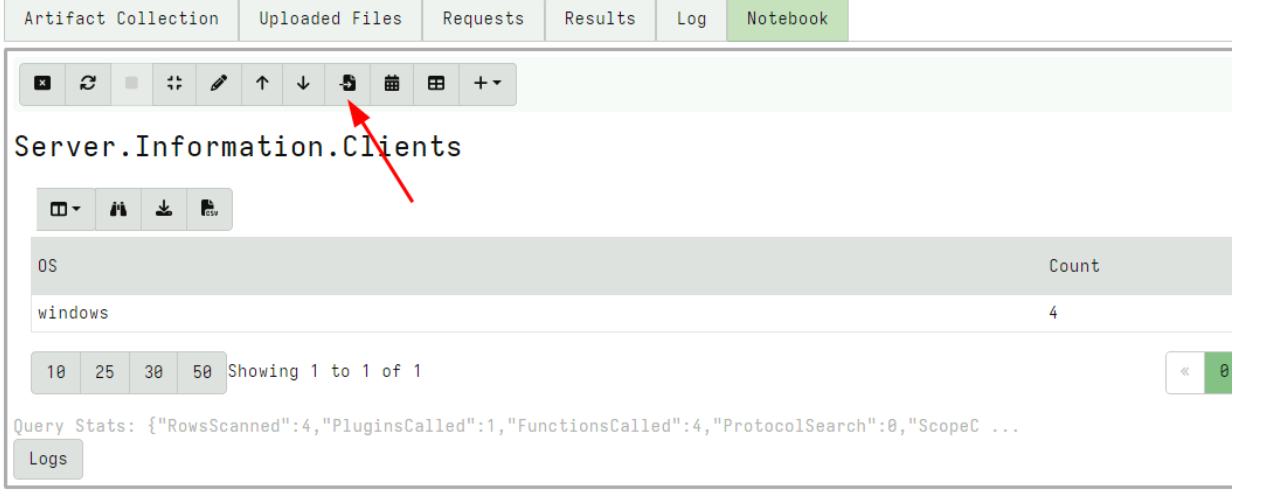
I can then select which Global notebook to copy the cell into.
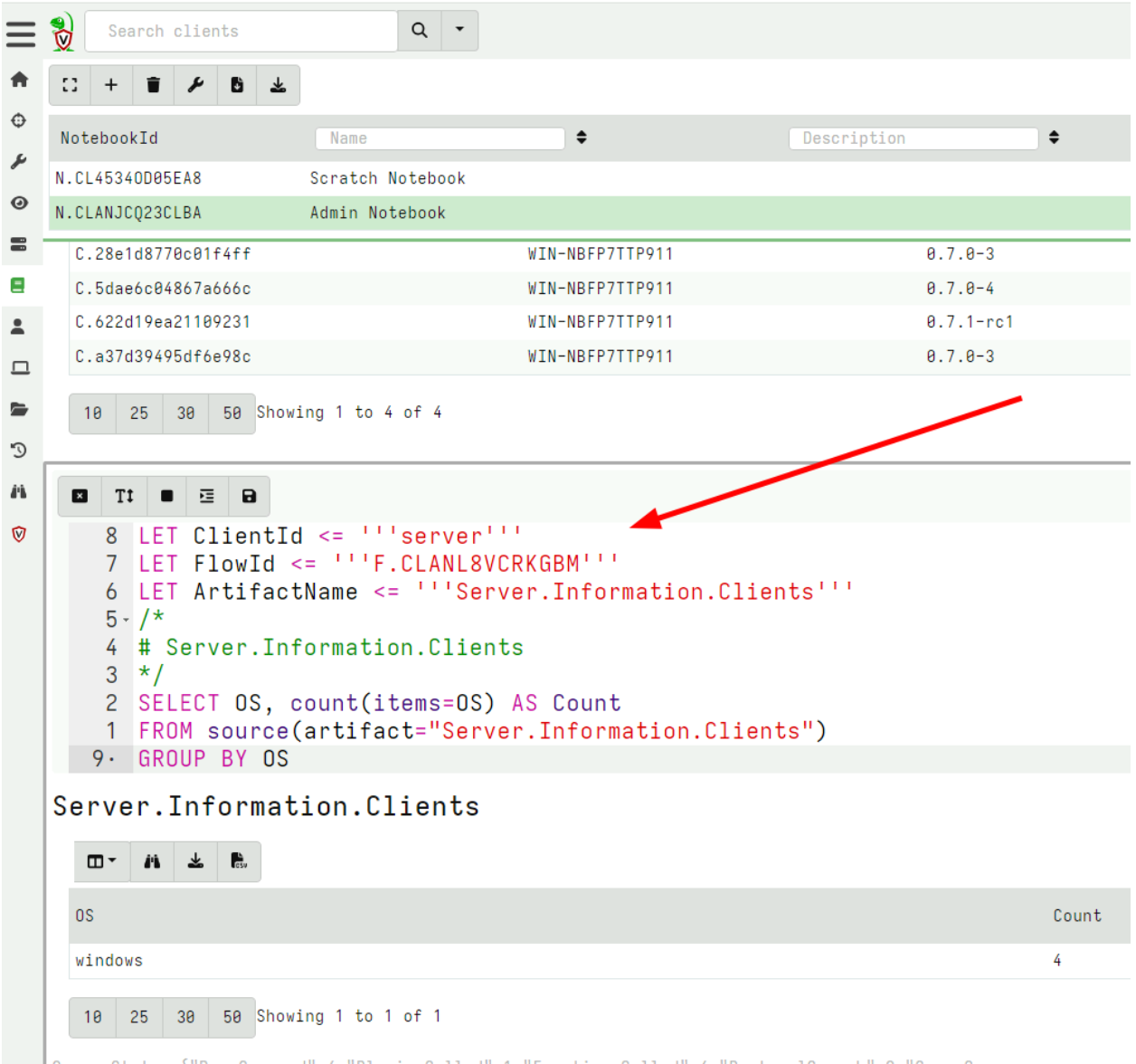
Velociraptor will copy the cell to the target notebook and add VQL statements to still refer to the original collection. This allows users of the global notebook to further refine the query if needed.
This workflow allows better collaboration between users.
VFS Downloads
Velociraptor’s VFS view is an interactive view of the endpoint’s filesystem. Users can navigate the remote filesystem using a familiar tree based navigation and interactively fetch various files from the endpoint.
Before the 0.7.1 release, the user was able to download and preview individual files in the GUI but it was difficult to retrieve multiple files downloaded into the VFS.
In the 0.7.1 release, there is a new GUI button to initiate a collection from the VFS itself. This allows the user to download all or only some of the files they had previously interactively downloaded into the VFS.
For example consider the following screenshot that shows a few files downloaded into the VFS.
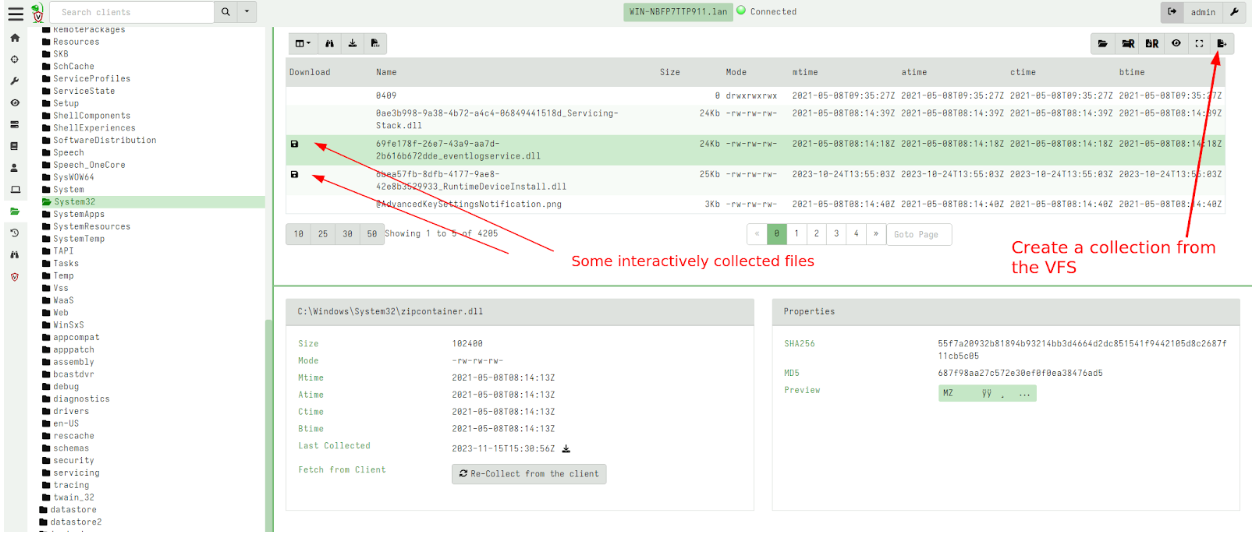
I can initiate a collection from the VFS. This is a server artifact (similar to the usual File Finder artifacts) that simply traverses the VFS with a glob uploading all files into a single collection.
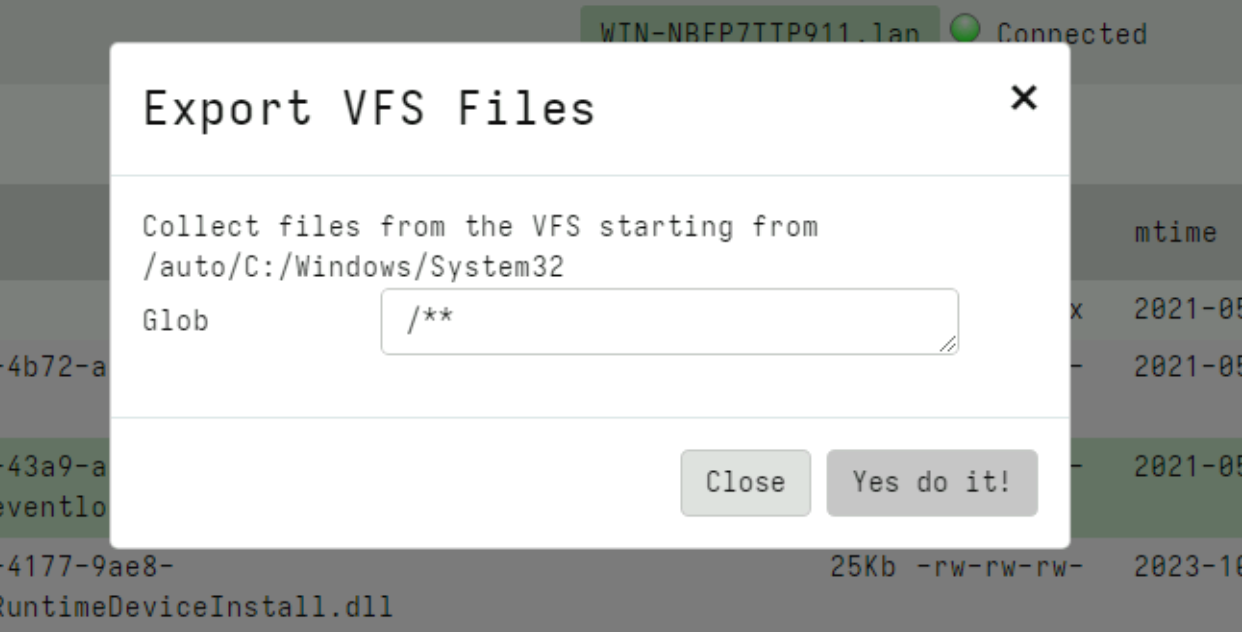
Using the glob I can choose to retrieve files with a particular filename pattern (e.g. only executables) or all files.
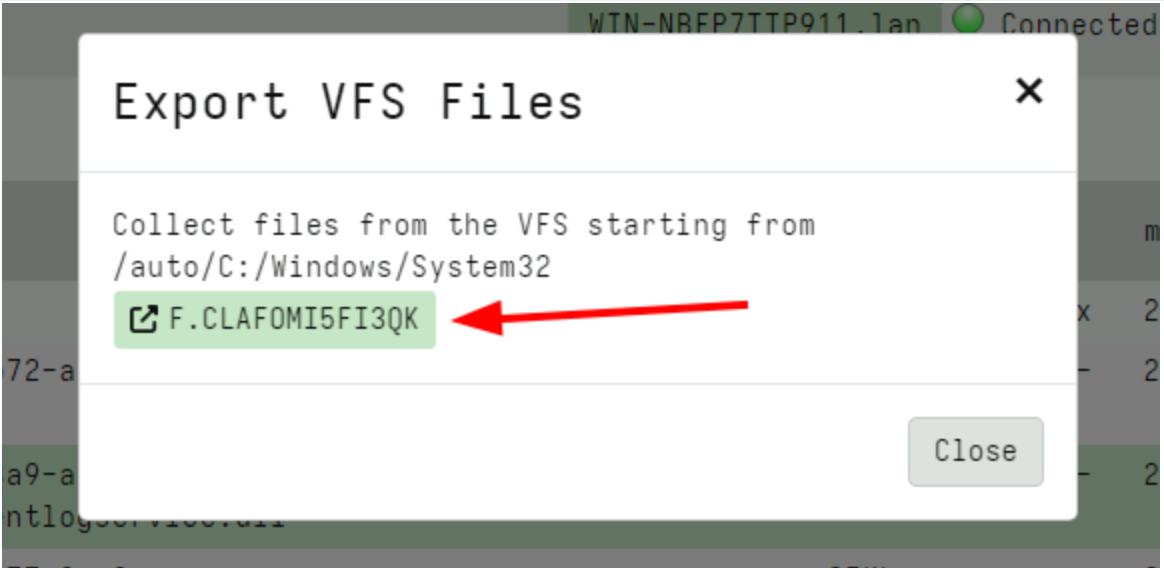
Finally the GUI shows a link to the collected flow where I can inspect the files or prepare a download zip just like any other collection.
New VQL plugins and capabilities
This release introduces an exciting new capability: Built-in Sigma Support.
Built-in Sigma Support
Sigma is fast emerging as a popular standard for writing and distributing detections. Sigma was originally designed as a portable notation for multiple backend SIEM products: Detections expressed in Sigma rules can be converted (compiled) into a target SIEM query language (for example into Elastic queries) to run on the target SIEM.
Velociraptor is not really a SIEM in the sense that we do not usually forward all events to a central storage location where large queries can run on it. Instead, Velociraptor’s philosophy is to bring the query to the endpoint itself.
In Velociraptor, Sigma rules can directly be used on the endpoint, without the need to forward all the events off the system first! This makes Sigma a powerful tool for initial triage:
- Apply a large number of Sigma rules on the local event log files.
- Those rules that trigger immediately surface potentially malicious activity for further scrutiny.
This can be done quickly and at scale to narrow down on potentially interesting hosts during an IR. A great demonstration of this approach can be seen in the Video Live Incident Response with Velociraptor where Eric Capuano uses the Hayabusa tool deployed via Velociraptor to quickly identify the attack techniques evident on the endpoint.
Previously we could only apply Sigma rules in Velociraptor by bundling the Hayabusa tool, which presents a curated set of Sigma rules but runs locally. In this release Sigma matching is done natively in Velociraptor and therefore the Velociraptor Sigma project simply curates the same rules that Hayabusa curates but does not require the Hayabusa binary itself.
You can read the full Sigma In Velociraptor blog post that describes this feature in great detail, but here I will quickly show how it can be used to great effect.
First I will import the set of curated Sigma rules from the Velociraptor Sigma project by collecting the Server.Import.CuratedSigma server artifact.
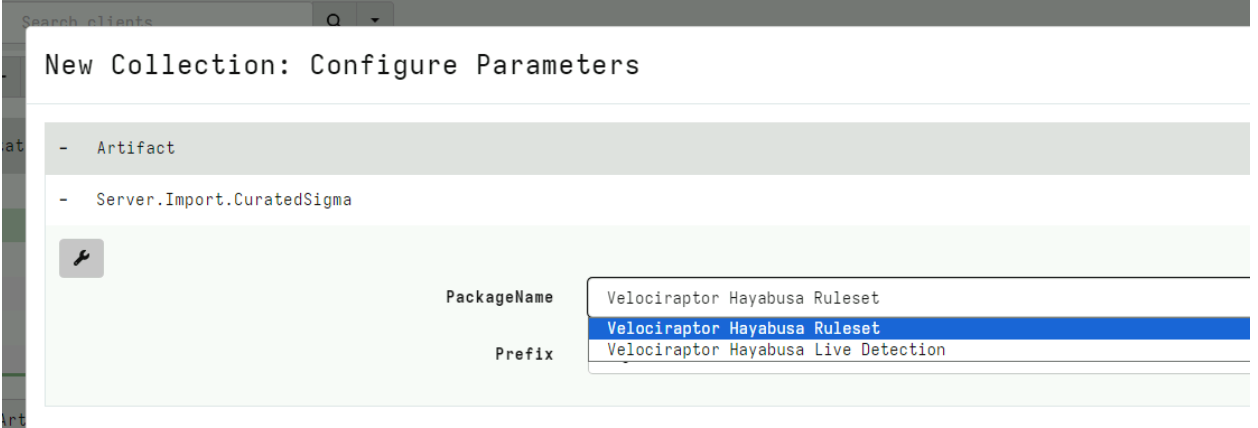
This will import a new artifact to my system with up to date Sigma rules, divided into different Status, Rule Level etc. For this example I will select the Stable rules at a Critical Level.
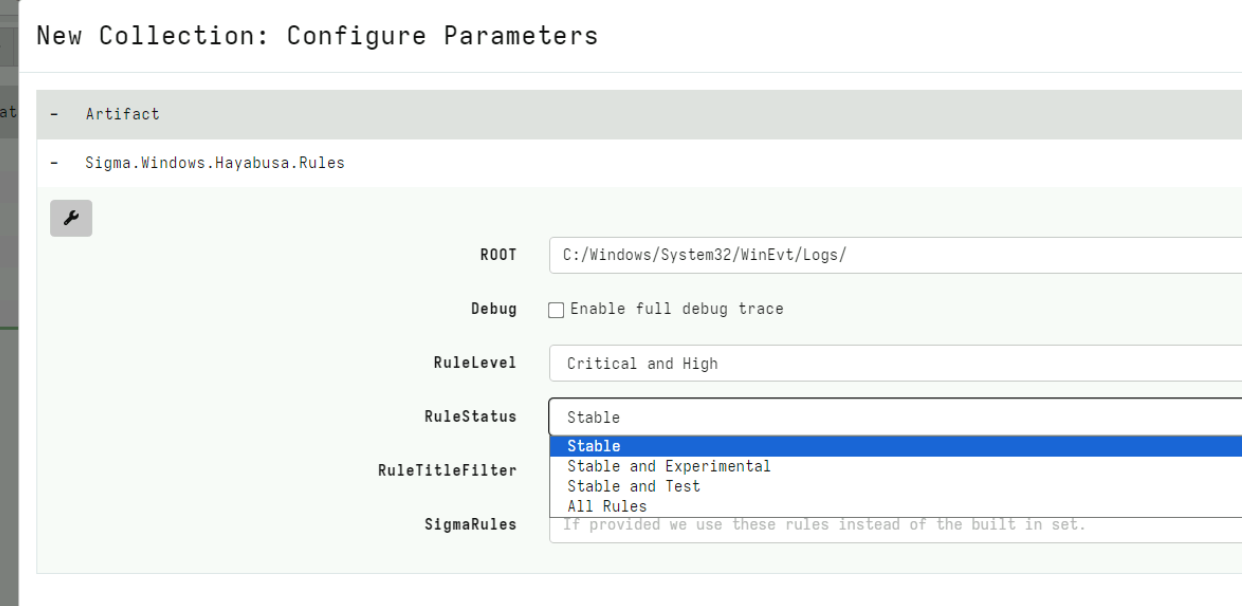
After launching the collection, the artifact will return all the matching rules and their relevant events. This is a quick artifact taking less than a minute on my test system. I immediately see interesting hits.

Using Sigma rules for live monitoring
Sigma rules can be used on more than just log files. The Velociraptor Sigma project also provides monitoring rules that can be used on live systems for real time monitoring.
The Velociraptor Hayabusa Live Detection option in the Curated import artifact will import an event monitoring version of the same curated Sigma rules. After adding the rule to the client’s monitoring rules with the GUI, I can receive interesting events for matching rules:

Other Improvements
SSH/SCP accessor
Velociraptor normally runs on the endpoint and can directly collect evidence from the endpoint. However, many devices on the network can not install an endpoint agent - either because the operating system is not supported (for example embedded versions of Linux) or due to policy.
When we need to investigate such systems we often can only access them by Secure Shell (SSH). In the 0.7.1 release, Velociraptor has an ssh accessor which allows all plugins that normally use the filesystem to transparently use SSH instead.
For example, consider the glob() plugin which searches for files.

We can specify that the glob() use the ssh accessor to access the remote system. By setting the SSH_CONFIG VQL variable, the accessor is able to use the locally stored private key to be able to authenticate with the remote system to access remote files.
We can combine this new accessor with the remapping feature to reconfigure the VQL engine to substitute the auto accessor with the ssh accessor when any plugin attempts to access files. This allows us to transparently use the same artifacts that would access files locally, but this time transparently will access these files over SSH:

This example shows how to use the SSH accessor to investigate a debian system and collect the Linux.Debian.Packages artifact from it over SSH.
Distributed notebook processing
While Velociraptor is very efficient and fast, and can support a large number of endpoints connected to the server, many users told us that on busy servers, running notebook queries can affect server performance. This is because a notebook query can be quite intense (e.g. Sorting or Grouping a large data set) and in the default configuration the same server is collecting data from clients, performing hunts, and also running the notebook queries.
This release allows notebook processors to be run in another process. In Multi-Frontend configurations (also called Master/Minion configuration), the Minion nodes will now offer to perform notebook queries away from the master node. This allows this sudden workload to be distributed to other nodes in the cluster and improve server and GUI performance.
ETW Multiplexing
Previous support for Event Tracing For Windows (ETW) was rudimentary. Each query that called the watch_etw() plugin to receive the event stream from a particular provider created a new ETW session. Since the total number of ETW sessions on the system is limited to 64, this used precious resources.
In 0.7.1 the ETW subsystem was overhauled with the ability to multiplex many ETW watchers on top of the same session. The ETW sessions are created and destroyed on demand. This allows us to more efficiently track many more ETW providers with minimal impact on the system.
Additionally the etw_sessions() plugin can show statistics for all sessions currently running including the number of dropped events.
Artifacts can be hidden in the GUI
Velociraptor comes with a large number of built in artifacts. This can be confusing for new users and admins may want to hide artifacts in the GUI.
You can now hide an artifact from the GUI using the artifact_set_metadata() VQL function. For example the following query will hide all artifacts which do not have Linux in their name.

Only Linux related artifacts will now be visible in the GUI.
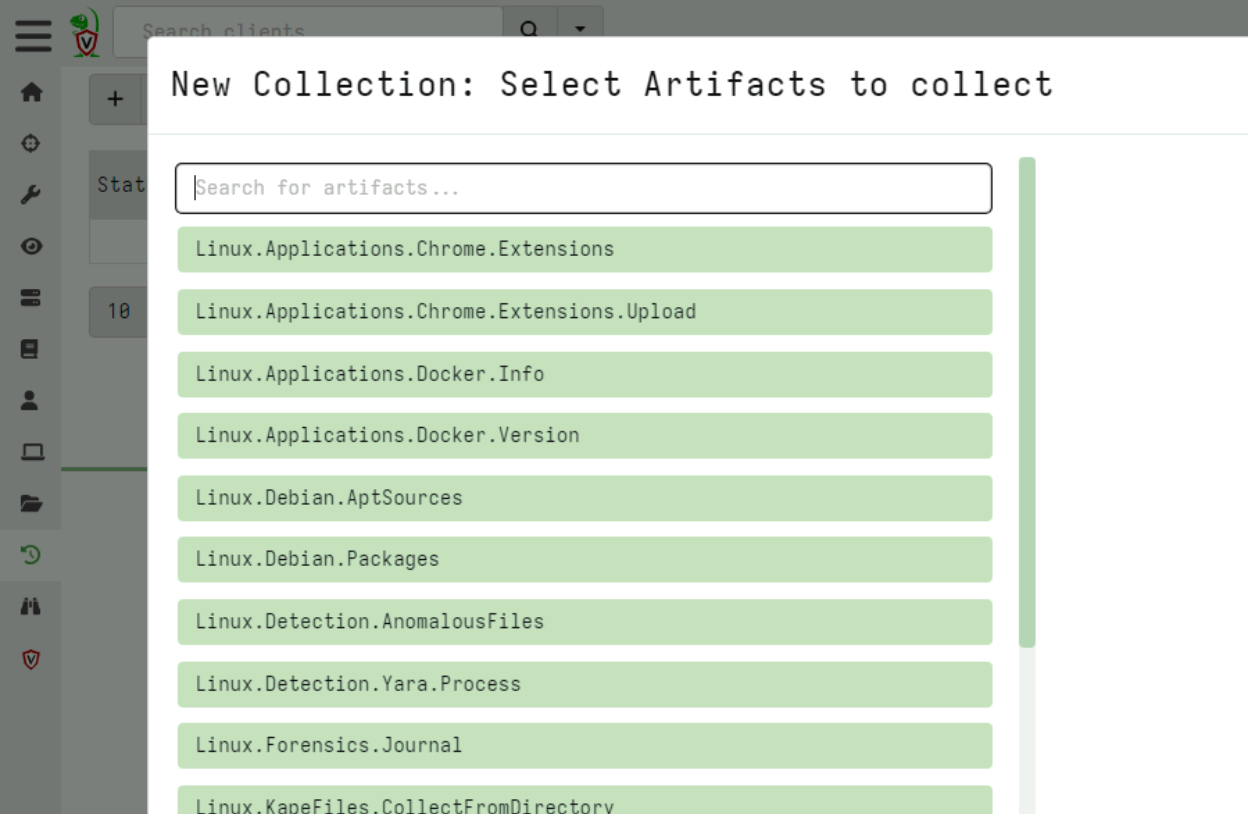
Local encrypted storage for clients
It is sometimes useful to write data locally on endpoints instead of transferring the data to the server. For example, if the client is not connected to the internet for long periods it is useful to write data locally. Also useful is to write data in case we want to recover it later during an investigation.
The downside of writing data locally on the endpoints is that this data may be accessed if the endpoint is later compromised. If the data contains sensitive information this can be used by an attacker. This is also primarily the reason that Velociraptor does not write a log file on the endpoint. Unfortunately this makes it difficult to debug issues.
The 0.7.1 release introduces a secure local log file format. This allows the Velociraptor client to write to the local disk in a secure way. Once written the data can only be decrypted by the server.
While any data can be written to the encrypted local file, the Generic.Client.LocalLogs artifact allows Velociraptor client logs to be written at runtime.
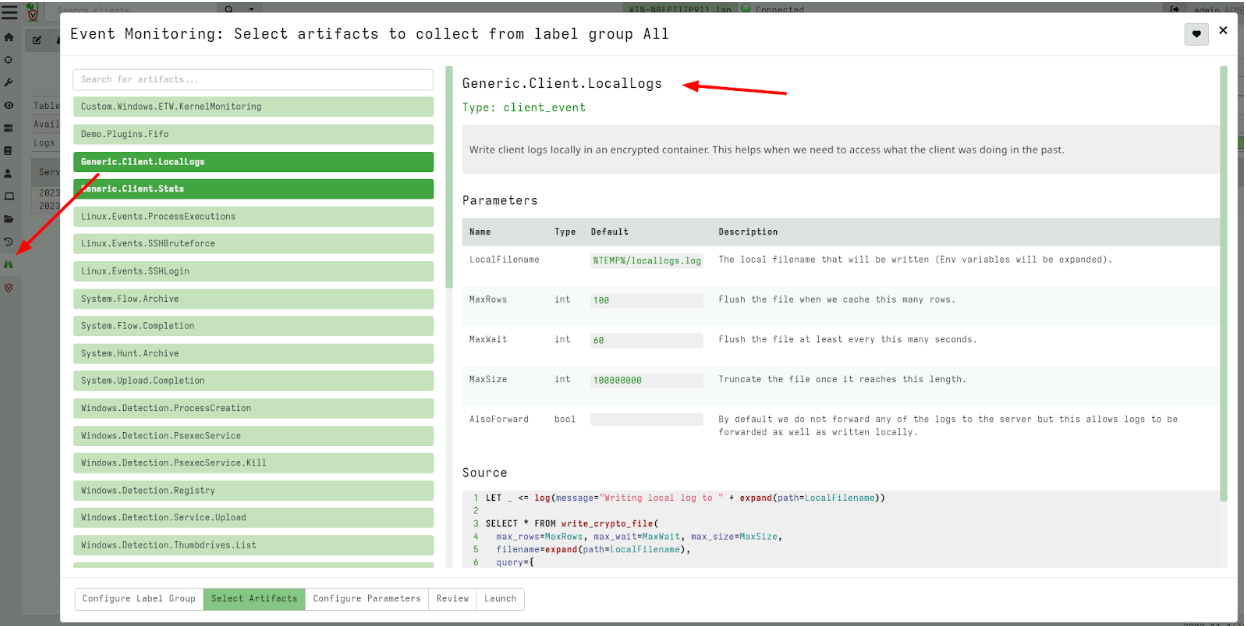
To read these locally stored logs I can fetch them using the Generic.Client.LocalLogsRetrieve artifact to retrieve the encrypted local file. The file is encrypted using the server’s public key and can only be decrypted on the server.
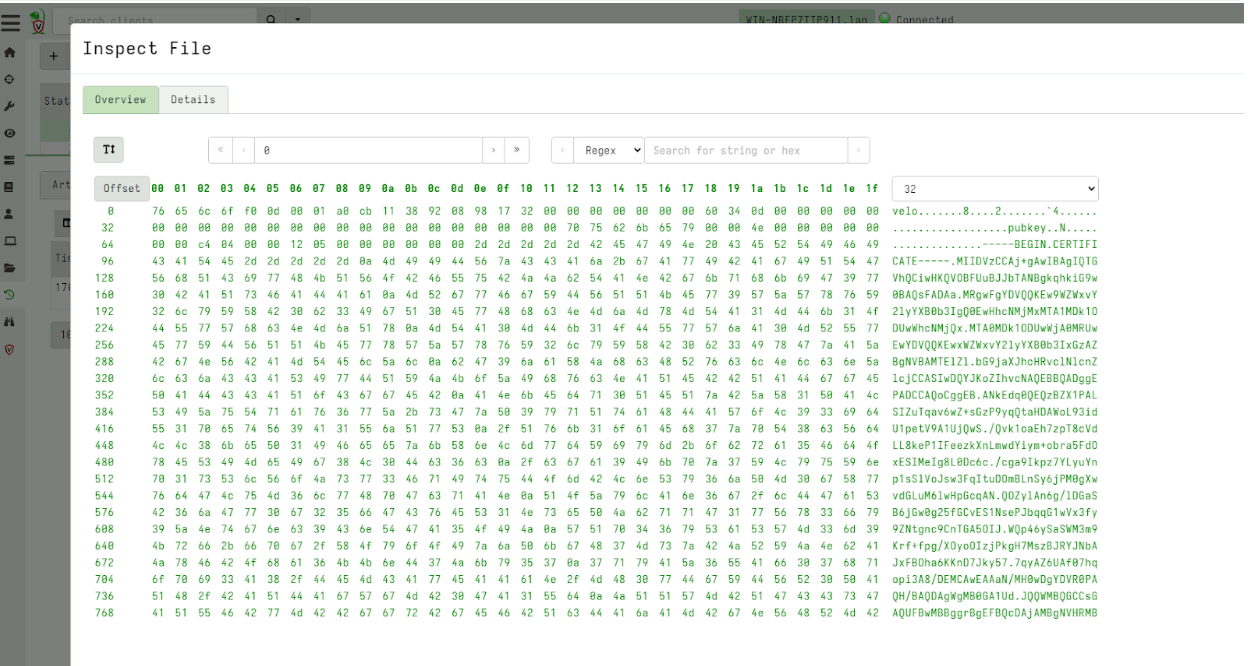
Once on the server, I can decrypt the file using the collection’s notebook which automatically decrypts the uploaded file.
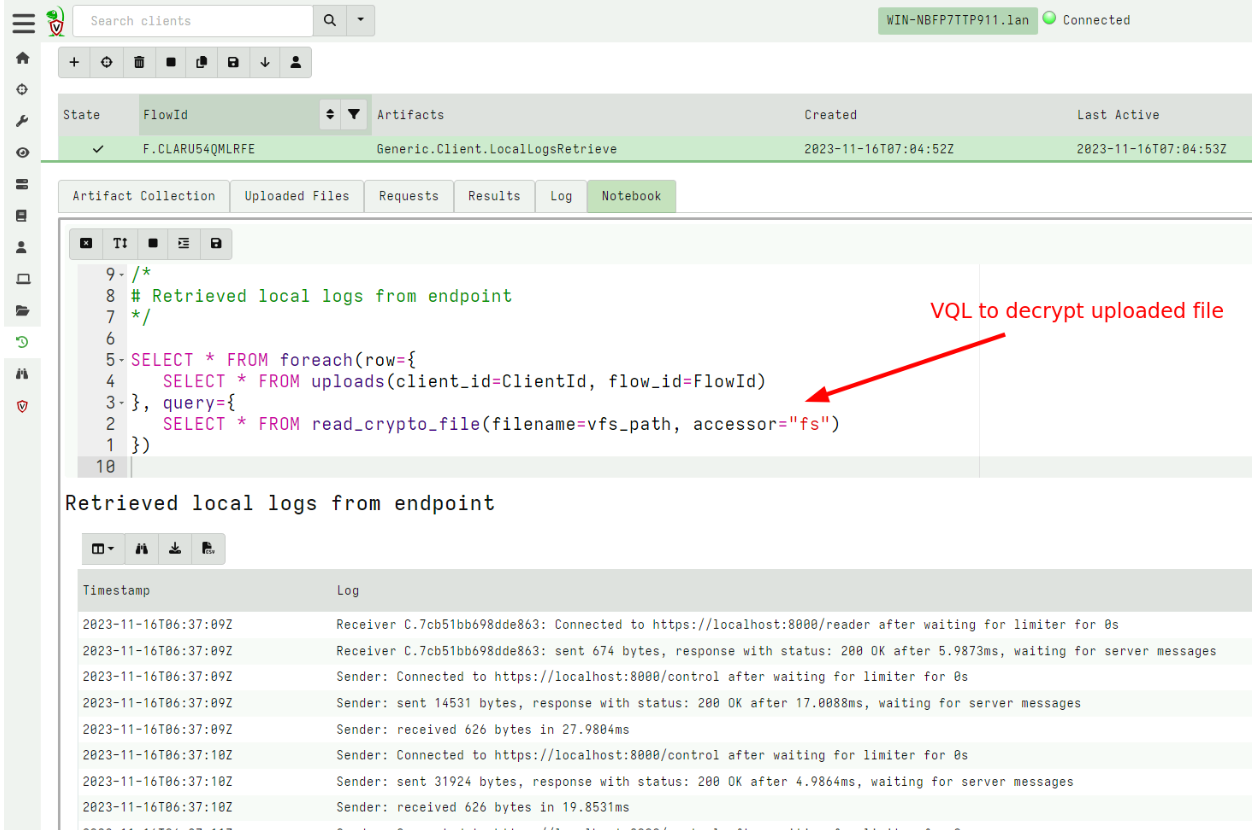
Conclusions
There are many more new features and bug fixes in the 0.7.1 release. If you’re interested in any of these new features, we welcome you to take Velociraptor for a spin by downloading it from our release page. It’s available for free on GitHub under an open-source license.
As always, please file bugs on the GitHub issue tracker or submit questions to our mailing list by emailing velociraptor-discuss@googlegroups.com. You can also chat with us directly on our Discord server.
